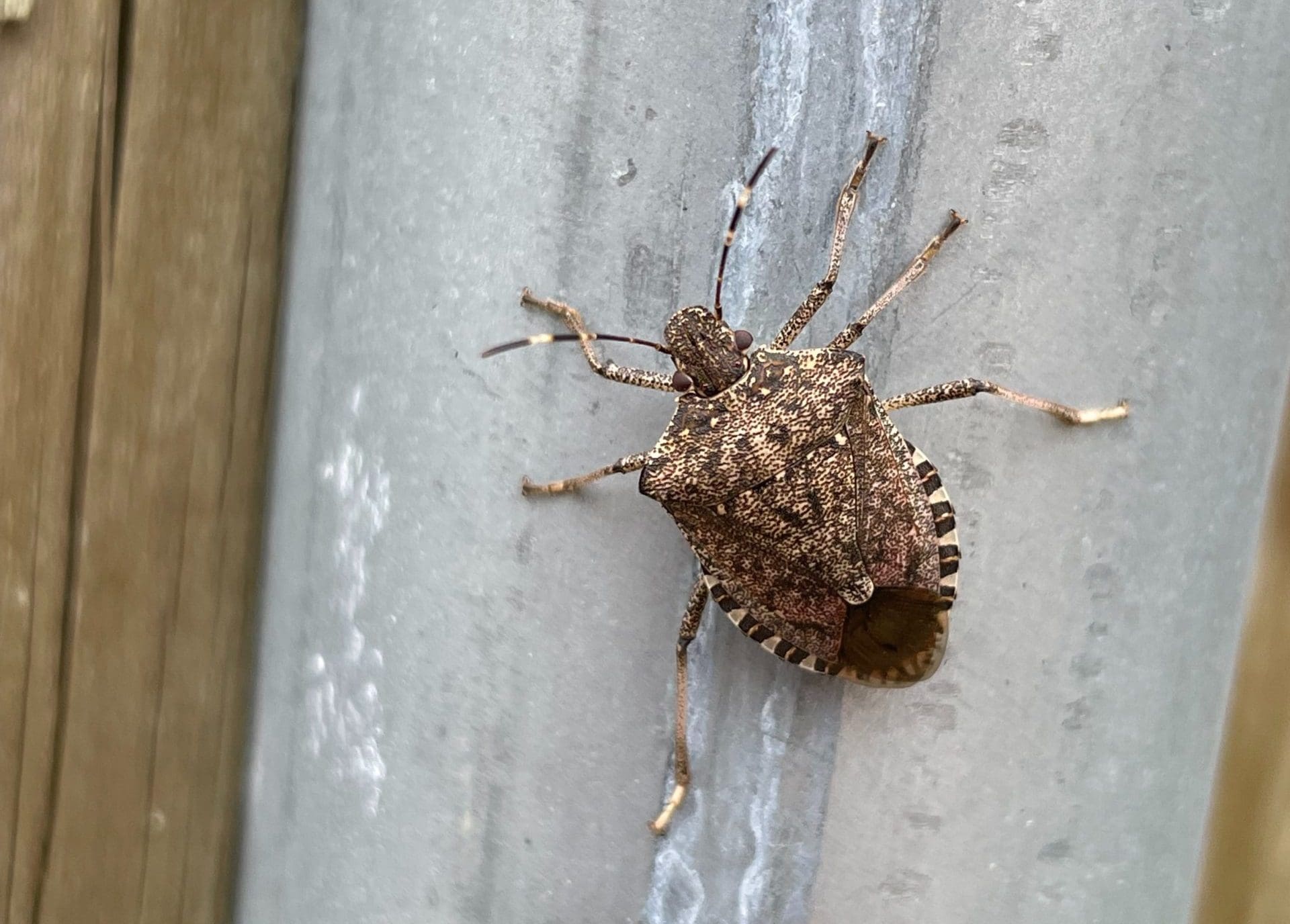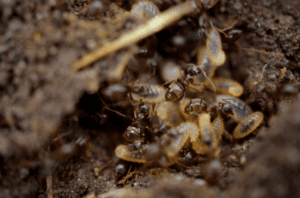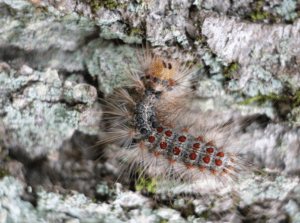
Appropriately named, stink bugs are one of the worst-smelling pests around. Whenever they feel threatened, or when they’re squished, stink bugs emit a foul odor to warn off predators. What’s more, they typically show up by the dozens, overrunning homes and businesses. Keep reading to learn everything you should know about preventing these stinky pests.
What Are Stink Bugs?
Stink bugs are an invasive insect species that can be found across the United States. Originally from Asia, they were not discovered in the U.S. until 1998. Their bodies are shield-shaped and they are nearly as wide as they are long. Stink bugs have six legs, a pair of antennae, and a pair of wings that are leathery near the head and become membranous close to the stink bug’s rear end.
Stink bugs’ colors and patterns vary depending on their species. Most often, adult stink bugs are brown, grayish, or green. The most common type of stink bug throughout the U.S. is the brown marmorated stink bug. This species is brown in color with copper, gray, or bluish spots. The outer edge of their abdomen is darker in color, and their antennae have alternating light and dark bands.
Are Stink Bugs Dangerous? In short, no; aside from their foul odors, stink bugs are almost completely harmless to humans. They do give off allergens that some people may be sensitive to, but they do not bite, nor do they transmit any diseases. Stink bugs may cause upset stomach, vomiting, and diarrhea in pets that eat them, but it is extremely rare for any issues beyond these to occur. Stink bugs really only pose any significant hazard to plants and crops. Stink bugs’ eating habits cause plants to wilt, become misshapen, grow incorrectly, or even die. Severe infestations can decimate gardens and agricultural crops.
Where Do Stink Bugs Live?
During warm weather, stink bugs mostly stay outdoors in protected areas. They are partial to hiding in vegetation, leaf and debris piles, cracks and crevices, and beneath peeling bark on trees. During the daytime, they like to gather in spots that get a lot of sun, like the sides of buildings. They are often crowded around doors and windows.
When the weather cools down, stink bugs start looking for a warm place to spend the winter; oftentimes, they choose to move into our homes and businesses. Indoors, stink bugs like to hide beneath floorboards or in attics, crawlspaces, walls, and basements. They will also take up residence in living areas, gathering mostly on sunny walls.
What Attracts Stink Bugs?
Stink bugs are mostly attracted to warmth and light sources. When they find a sunny wall, they will spend the day there. If the building they’re on is suitable for overwintering, they will search for a way to enter. They enter through any cracks or gaps they can find.
Stink bugs are of course attracted to food sources as well. They are fond of crops such as fruits, vegetables, beans, grains, nuts, and grasses. Some kinds of stink bugs will eat other insects, like caterpillars.
When Are Stink Bugs Active?
Stink bugs are most active from March to September. When the cooler weather arrives, they find a place to spend the winter. Once they find such a place, they will stay mostly hidden until the warm weather comes back around. However, they may venture out of their hiding spots on warmer winter days.
How To Prevent Stink Bugs
Seal all entrances. Stink bugs can enter buildings through very small openings. Take a walk around the outside of your home or business and look for any possible entrances. Use a silicone-based caulk to fix cracks in the foundation or walls, and to seal gaps around windows, doors, utility wire entrances, and ventilation systems. Replace missing shingles, repair broken siding, replace torn weather-stripping, and install screens on vent and chimney openings. It is also important to patch up holes in window and door screens, as those are a popular entryway for stink bugs. For extra protection, wipe screens with a dryer sheet- stink bugs hate the smell!
Minimize outdoor lighting. Since stink bugs are drawn to light, it is a good idea to keep outdoor lights off at night and close window blinds to block indoor light. For outdoor lights that need to stay on, try using yellow light bulbs instead of white as they are less attractive to stink bugs.
Landscape against stink bugs. Remove their hiding spots around your property by keeping vegetation trimmed, weeding gardens, removing debris and leaf piles, and storing firewood at least 20 feet from the outside of your home or business. You can also landscape with plants that repel stink bugs, like garlic, lavender, thyme, catnip, and marigold. Or, plant some serviceberries and dogwood to attract bluebirds, cardinals, and wrens, all of whom like to snack on stink bugs.
Reduce excess moisture. Most pests like damp areas so it is vital to fix leaks and clogs promptly. In areas like basements and crawl spaces, ensure proper ventilation and use a dehumidifier to keep the area as dry as possible.
Check items before bringing them indoors. Stink bugs like to hitch a ride indoors on items like packages, firewood, holiday decorations, and other items that have spent time outside. Check such items for stink bugs before bringing them inside.
Vacuum them up. When you find stink bugs, do not squish them. Instead, vacuum them up to avoid the odor they emit when squished. Promptly dispose of the vacuum bag.
If stink bugs have taken over your home or business, give Twin-Boro a call today to set up your free inspection. We’ll help you choose a stink bug control plan that will have your property smelling better in no time!






